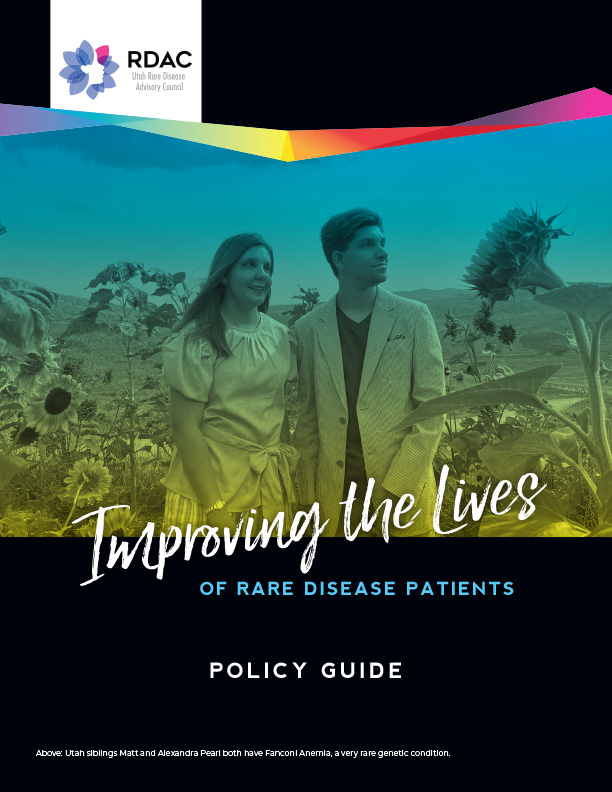RDAC Position
There are many rare diseases that put Utahns at high-risk of severe disease from COVID-19. The lack of recognition of some rare diseases as a high-risk category for vaccination and treatment eligibility has had unintended, but serious, consequences. Delays in vaccination have impacted patient safety for many that were unable to get early vaccination. The RDAC asks that in future policy decisions and public messaging for COVID-19 (and for other pandemic preparedness and response), “rare diseases that may cause severe risks” be clearly considered a formal category of high-risk.
Issue
Throughout the COVID-19 pandemic, many members of Utah’s rare disease communities have faced extreme disruption to their lives and medical care. For most rare diseases, there is no information that could inform risk of severe illness and complications from COVID-19 and patients have to rely on their healthcare provider’s recommendations and on common sense to determine their risk. Utah public health messaging and policies regarding vaccination eligibility for those at high-risk has consistently been silent regarding the rare disease population, including those who may be at highest risk for severe disease and death.
For many, this lack of attention in messaging and eligibility requirements has resulted in confusion, hesitancy and significant delays in getting vaccinated. Because it wasn’t clear that rare disease patients were identified as high-risk, this population faced a quandary – risk getting turned away at vaccination sites or delay vaccination and potentially endanger their health.
Subsequently, many of these patients remained unvaccinated and unprotected despite a physician recommendation that they receive a timely vaccine, even as other patients that were at less risk, but had a more common and specific condition were eligible.
The Utah State Department of Health and Human Services made recommendations based on the best available information at hand about how to quickly protect the patient populations at highest risk. However, while it may be not feasible to ask for familiarity of the approximately 7,000 rare diseases in the midst of a public health crisis, such conditions should be considered when decisions to prioritize patient groups are being made.
